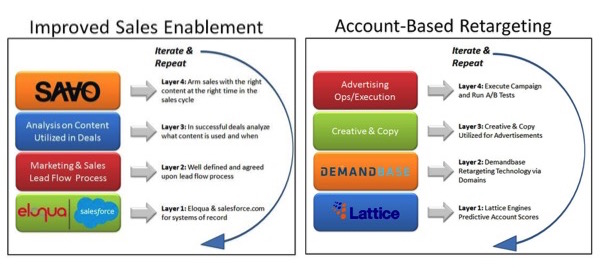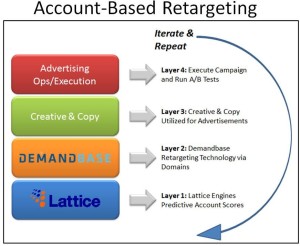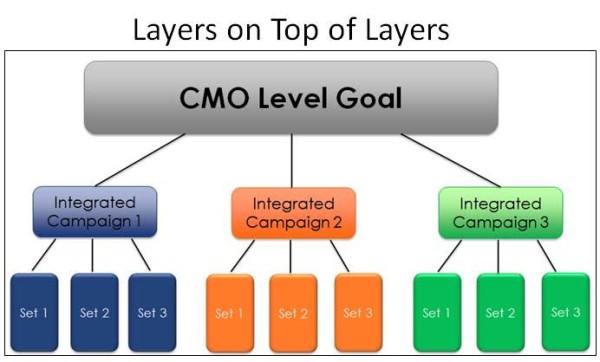- Marketing Nation
- :
- Products
- :
- Product Documents
- :
- Scott Brinker: Don’t buy marketing technologies, b...
Scott Brinker: Don’t buy marketing technologies, build layers instead
- Mark as New
- Bookmark
- Subscribe
- Mute
- Subscribe to RSS Feed
- Permalink
- Report Inappropriate Content

The following is a guest post from Sam Melnick at Lattice Engines and a former analyst in IDC’s CMO Advisory Service. For all of the chatter of “marketing stacks” these days, I found Sam’s description of capability-specific “layers” to be a more precise way to think about how to best implement marketing technology in context.
This may be the understatement of the year: the marketing landscape is becoming increasingly complex and difficult to navigate. As publicized here on the chiefmartec.com blog, there are close to 2,000 different marketing technologies, all with visions and pitches of making the lives of marketers easier.
But last I checked, there are still only 24 hours in a day and, if anything, the expectations of today’s marketer are greater than ever before.
The challenge is not only picking the right vendors, but understanding what type of technology should be purchased next, the efforts that will go into making it successful, where it will fit within the current marketing strategy, and what the returns to the bottom line will be. All these questions can invite “analysis paralysis” — or lead to unrealistically lofty goals for whatever technologies ultimately are purchased. So what is a marketer to do?
The answer that I suggest is:
Don’t buy point solutions or marketing technologies in a vacuum. Instead, build capability layers into your marketing organization and organize marketing technologies in the context of those layers and the actions they need to perform.
Over the past several years, I have had hundreds of conversations with B2B marketers about successful marketing practices. In my pervious role as an analyst at IDC’s CMO Advisory Service, we urged folks to build systems, not silos within marketing. Now at Lattice, I talk to customers about the actions they want to take, create, and improve with predictive.
These both are backed by the same principle: creating harmony towards a common goal, in a complex environment, by building sets of layers within marketing.
Let’s beyond the theory and examine a couple of tangible examples of actual marketing layers in action. In these examples, an important factor to note is it is not just about technologies. The marketing organization and the sets of layers should revolve around four factors: people, process, technologies, and data.
Example 1: Improving Sales Effectiveness
The use case for this set of layers is to work more intelligently to enable and arm the sales team during the sales process.

Layer 1: Eloqua & Salesforce.com (Technology) — The systems of records and view into each deal from start to finish.
Layer 2: Marketing & Sales Lead Flow Process (Process) — The steps in place to assure consistency and measureable actions are taking place across the organization.
Layer 3: Analysis on Content Utilized in Deals (People & Data) — Detailed analysis of what content and collateral was used in successful and unsuccessful deals. Predicated on the information being in place (Layer 1) and repeatable processes being taken (Layer 2).
Layer 4: Savo (Technology) — The execution of arming sales with the content, collateral, and messaging that will be most effective depending on the selling circumstances and timing.
Example 2: Account-Based Retargeting Advertisements
The use case for this set of layers is for supporting account-based marketing to run a more effective advertising campaign.

Layer 1: Lattice Engines (Technology) — The targeting engine behind this campaign, using predictive analytics to identify the accounts that are most likely to buy.
Layer 2: Demandbase (Technology) — The vehicle to action to map and deliver retargeted ads in B2B networks. Layer 1 provides the “who,” whereas this layer is the “how.”
Layer 3: Creative & Copy (People) — The content, put in place by the staff running the advertising program, that will be delivered to market.
Layer 4: Advertising Ops/Execute (People & Process) — The overall management of the program, including A/B testing and confirmed methods of measurement.
The final step of any of these sets of layers is to bring in the data, take the learnings, iterate and repeat (or cross it off the list and move on to the next test case).
How to Put Layers in Place
The imperative for these sets of layers isn’t to build complexity into marketing, but rather to be strategic with marketing actions and technology purchases and avoid losing money and time. And while it’s unrealistic to think that with a snap of the fingers every part of your marketing will have these high functioning sets of layers, it is something to push towards.
Here are four suggestions to get you started:
1. Ask Why. I am a huge fan of the “5 Whys” to derive what is truly the problem or what truly needs to be accomplished. So, before any technology is purchased or a major campaign is launched, ask those critical “why” questions.
2. Start Small. Don’t take on the juiciest, cross-departmental, multi-geo problem to begin with. Identify a well-defined capability — like the examples above — and look to build a set of layers around that. This will be easier to manage and facilitates incremental testing and experimentation.
3. Map It Out. For each campaign, technology and problem you are solving, map out the layers involved. This can be as simple or complex as you want, but getting these layers on paper will help with the approach and provide valuable documentation.
4. Make it a Team Effort. Ask each team member to map out or explain the set of layers they are building. When each team member brings something to the table, this will produce interesting conversations and learnings. It will also provide clarity into what skills and technologies are most valuable to your organization.
Finally, as you advance and begin to successfully build and map sets of layers, the end goal should be to create sets of layers on top of each other — ultimately rolling into a single marketing vision or goal. See below for how this might look:

I’d love to hear what sets of layers you are building in your marketing organization. What has worked? What hasn’t? What’s the ultimate set of layers you are working to build towards?

.png)